Introduction: Fragile Peace, Shattered Fast

Ceasefire breached again—just hours after being announced between India and Pakistan. What began as a hopeful diplomatic breakthrough has now spiraled back into conflict, testing the limits of international law. On May 10, 2025, the world briefly exhaled as India and Pakistan declared a U.S.-brokered ceasefire following the deadliest escalation in decades. It was a moment of cautious hope. But within hours, artillery fire, drone incursions, and explosions were reported across the Line of Control and the International Border.
Civilian homes were blacked out. Border villages were evacuated. The ceasefire—already legally fragile—collapsed before it could hold.
In this blog, we examine what international law can realistically offer in moments like this: when promises are broken, treaties are strained, and accountability feels out of reach.
Ceasefires in International Law: Legally Binding or Politically Fragile?
What Is a Ceasefire—Legally?

A ceasefire is:
- A temporary halt in hostilities,
- Usually agreed to bilaterally or with third-party facilitation,
- Meant to enable negotiations, aid delivery, or diplomatic space.
Under Article 33 of the UN Charter, ceasefires fall under peaceful dispute resolution tools. However, unless converted into a formal treaty or UN resolution, they remain politically symbolic—not legally enforceable in court.
The India-Pakistan Ceasefire of May 2025
- Brokered by: United States, with support from Saudi Arabia and Turkey
- Announced by: U.S. President Donald Trump
- Legal Format: Verbal agreement, not ratified by treaty or UN Security Council
Result: No binding consequences for violations—only diplomatic fallout.
The Legal Consequences of Breach
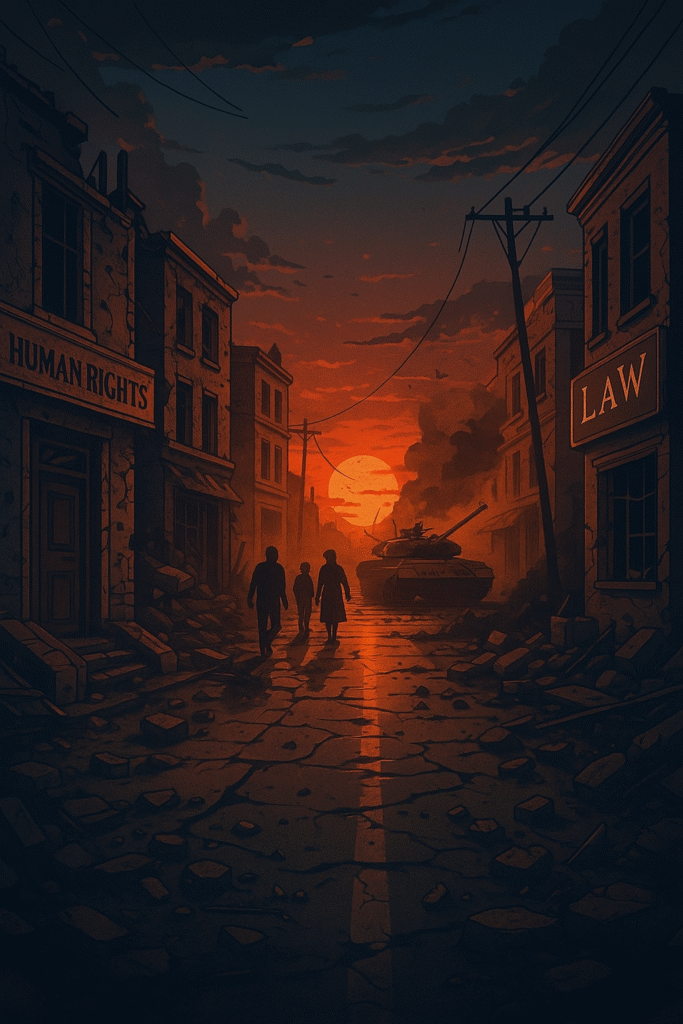
Is a Ceasefire Violation Illegal?
Yes. Even informal ceasefires, when publicly agreed to by states, create legitimate expectations under international law. Breaching them may violate:
- Article 2(4) of the UN Charter (prohibition on use of force),
- Common Article 3 of the Geneva Conventions (protection of civilians),
- Principles of customary international law.
Remedies? Complicated.
- ICJ Jurisdiction: India and Pakistan have not accepted compulsory jurisdiction for bilateral disputes.
- UN Security Council: Possible, but blocked by geopolitical alliances (China, Russia).
- International condemnation: Symbolic pressure, rarely followed by sanctions unless there’s mass-scale aggression.
The Humanitarian Fallout: What Law Protects Civilians Now?

As of May 10 evening:
- Shelling resumed across several sectors in Jammu & Kashmir and Rajasthan.
- Drones spotted along the international border.
- Local news reported at least 7 injuries and mass displacement in Poonch and Samba districts.
Under the Geneva Conventions, all parties must:
- Avoid targeting civilians,
- Allow medical access,
- Prohibit collective punishment.
But without neutral investigation bodies or wartime monitoring, these protections exist more on paper than in practice.
Legal Frameworks Still in Play: Are They Being Respected?
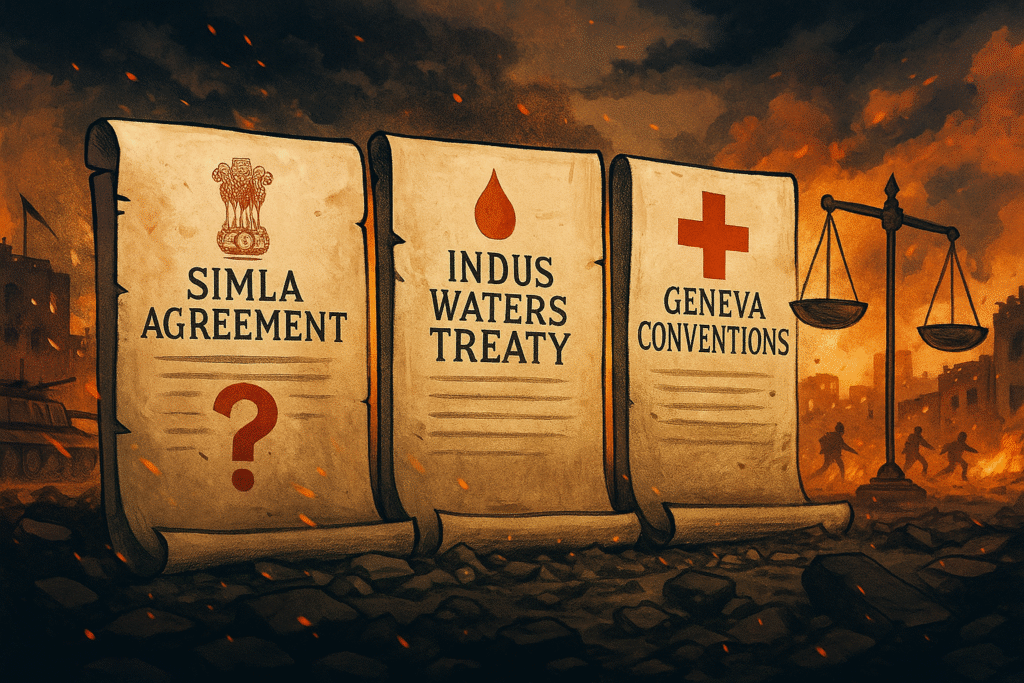
Despite the ceasefire collapse, several treaties and agreements still technically bind India and Pakistan:
The Simla Agreement (1972)
- Requires disputes to be resolved bilaterally.
- Current U.S. mediation stretches its intent—but not unlawfully.
- Breach of ceasefire tests its spirit.
Indus Waters Treaty (1960)
- World Bank-brokered water-sharing pact.
- India had suspended it earlier during the conflict.
- Still suspended as of now, signaling unresolved hostilities.
Geneva Conventions (1949)
- Signed by both India and Pakistan.
- Legally obligate protection of civilians and humane treatment of prisoners.
- Violations could constitute war crimes, though enforcement is rare without ICC membership.
Role of Mediation: Can the U.S. or Others Still Do Something?

The May 2025 ceasefire was:
- Brokered by the U.S.
- Backed quietly by Turkey and Saudi Arabia
- Largely verbal
Why Did It Fail?
- No written framework, enforcement clause, or verification mechanism.
- No international observers to verify incidents.
- Underlying hostilities—especially in Kashmir—remained unresolved.
Moving Forward:
Mediation needs to lead to written agreements, monitored by neutral observers, and ideally registered with the UN.
What Legal Options Exist Now?
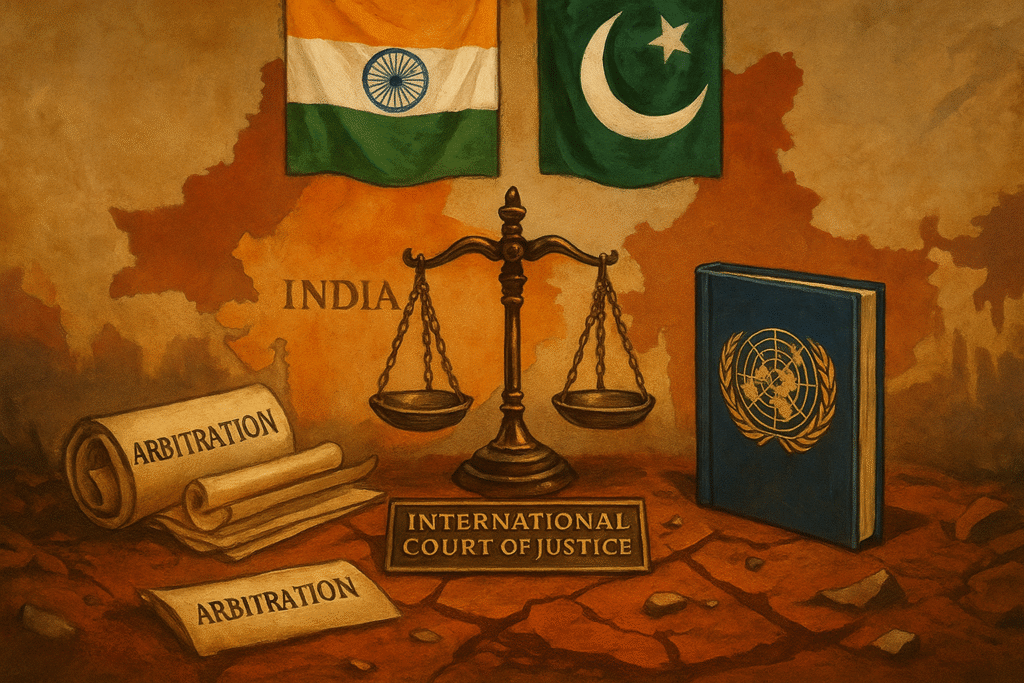
For India:
- Raise ceasefire violations in the UN General Assembly or through the UN Secretary-General.
- Consider invoking Article 51 (self-defense) if further attacks occur.
For Pakistan:
- Prove absence of state involvement in ceasefire breach—or risk deeper diplomatic isolation.
- Allow international access to verify claims if it wants to shift the narrative.
For the International Community:
- Pressure both parties to formalize ceasefires into legal agreements.
- Establish an independent ceasefire monitoring commission (ICMC) through SAARC or UN.
Conclusion: Law Can’t Stop Missiles, But It Can Anchor Peace
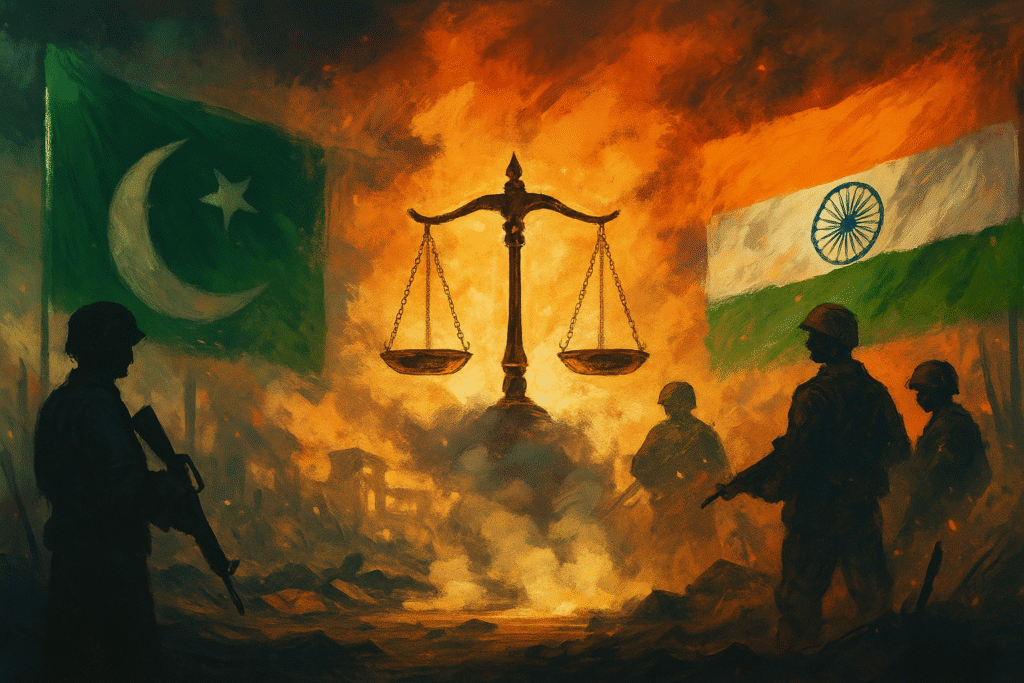
The ceasefire collapse shows us what happens when diplomacy is rushed and law is sidelined.
What’s needed now is not another press conference or a vague “de-escalation.” What’s needed is:
- Formal legal documentation,
- Neutral oversight,
- And a shared commitment to enforcement—not just agreement.
At Lexnova, we believe international law is the last frontier before chaos—and it’s time we fortified that frontier, not just mourned its erosion.
References
- https://www.indiatoday.in/india/story/shelling-reported-jammu-region-pakistan-breaks-ceasefire-agreement-india-tensions-operation-sindoor-2722858-2025-05-10
- https://www.reuters.com/world/asia-pacific/india-pakistan-water-treaty-remains-suspended-despite-ceasefire-sources-say-2025-05-10/
- https://www.theguardian.com/world/2025/may/10/india-pakistan-immediate-us-mediated-ceasefire
To understand how a decades-old treaty still shapes the legal and diplomatic contours of India-Pakistan relations, read our in-depth breakdown of the Shimla Agreement here.
If you want to talk to us, just fill in the form by clicking here.

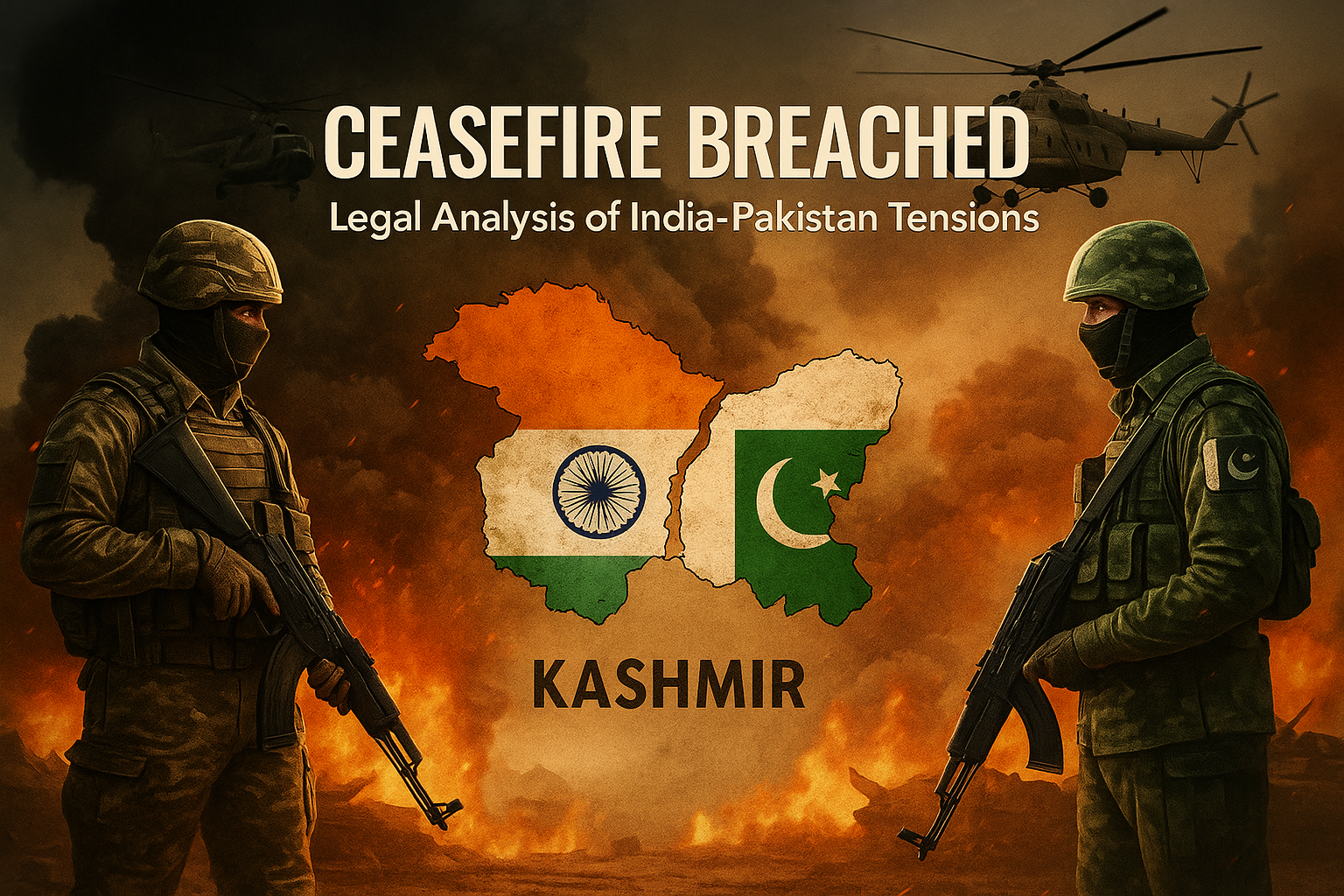
One Response